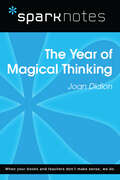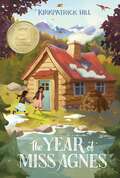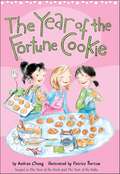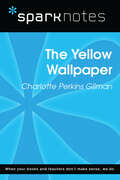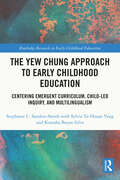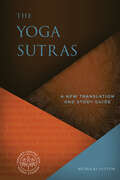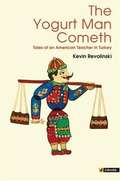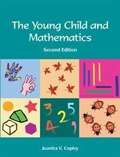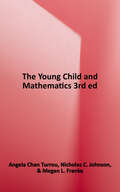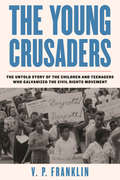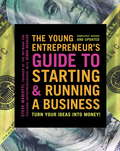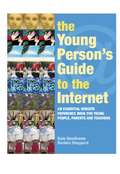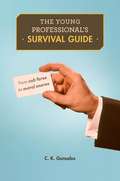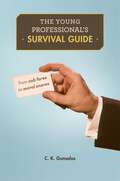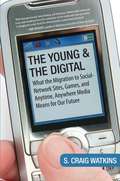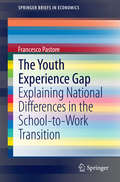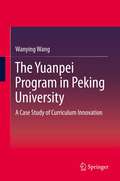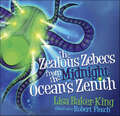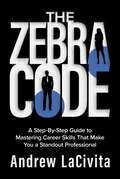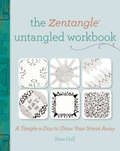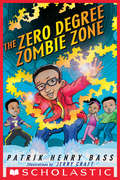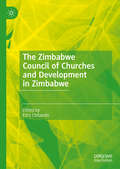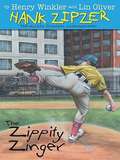- Table View
- List View
The Year of Magical Thinking (SparkNotes Literature Guide Series)
by SparkNotesThe Year of Magical Thinking (SparkNotes Literature Guide) by Joan Didion Making the reading experience fun! Created by Harvard students for students everywhere, SparkNotes is a new breed of study guide: smarter, better, faster. Geared to what today's students need to know, SparkNotes provides: *Chapter-by-chapter analysis *Explanations of key themes, motifs, and symbols *A review quiz and essay topicsLively and accessible, these guides are perfect for late-night studying and writing papers
The Year of Miss Agnes
by Kirkpatrick HillA year they'll never forgetTen-year-old Frederika (Fred for short) doesn't have much faith that the new teacher in town will last very long. After all, they never do. Most teachers who come to their one-room schoolhouse in remote, Alaska leave at the first smell of fish, claiming that life there is just too hard.But Miss Agnes is different -- she doesn't get frustrated with her students, and she throws away old textbooks and reads Robin Hood instead! For the first time, Fred and her classmates begin to enjoy their lessons and learn to read and write -- but will Miss Agnes be like all the rest and leave as quickly as she came?
The Year of Secret Assignments
by Jaclyn MoriartyIn this epistolary novel, three Aussie private school girls enter a pen pal program that leads to friendship, love, mischief, mystery, and revenge.The Ashbury-Brookfield pen pal program is designed to bring together the two rival schools in a spirit of harmony and “the Joy of the Envelope.” But when Cassie, Lydia, and Emily send their first letters to Matthew, Charlie, and Sebastian, things don’t go quite as planned. What starts out as a simple letter exchange soon leads to secret missions, false alarms, lock picking, mistaken identities, and an all-out war between the schools—not to mention some really excellent kissing.Praise for The Year of Secret Assignments“Who can resist Moriarty’s biting humor?” —Kirkus Reviews“This energetic novel reveals the author’s keen understanding of teen dynamics and invites audience members to read between the lines to discover what makes each character tick. Containing elements of mystery, espionage, romance and revenge, Moriarty’s story will likely satisfy hearty appetites for suspense and fun.” —Publishers Weekly
The Year of the Fortune Cookie (The Anna Wang Novels #3)
by Andrea ChengEleven-year-old Anna heads off to sixth grade, leaving the comfort and familiarity of elementary school behind and entering the larger, more complex world of middle school. Surrounded by classmates who have their roots all in America, Anna begins to feel out of place and wonders where she really belongs. When Anna takes a trip to China, she not only explores a new country and culture, but finds answers to her questions about whether she is more Chinese or more American. This young illustrated chapter book is the third in the series that includes The Year of the Book and The Year of the Baby. For grades 1-4.
The Yellow Bus
by Loren LongPerfect for fans of Love and Hello, Lighthouse, The Yellow Bus from #1 New York Times bestselling Loren Long is a tender and hopeful new classic about a forgotten school bus that finds happiness and purpose in the most unexpected places--and in the journey along the way. <P><P> There is a bright yellow bus who spends her days driving. She loves carrying children from one important place to another. Every morning they climb in... Pitter-patter, pitter-patter, giggle, giggle-patter. And they fill her with joy. <P><P> As time passes, things change. The Yellow Bus gets a new driver, a new route, and new passengers, young and old. Until one day the driving stops for good, and the Yellow Bus is left on her own. And yet, no matter where she is, the Yellow Bus still finds joy and discovery in the world around her. <P><P> With stirring black-and-white artwork and powerful pops of color, The Yellow Bus is a poignant reflection on the many new beginnings life has to offer. <P><P><i>Advisory: Bookshare has learned that this book offers only partial accessibility. We have kept it in the collection because it is useful for some of our members. Benetech is actively working on projects to improve accessibility issues such as these.</i> <p> <b>New York Times Bestseller</b>
The Yellow Wallpaper (SparkNotes Literature Guide Series)
by SparkNotesThe Yellow Wallpaper (SparkNotes Literature Guide) by Charlotte Perkins Gilman Making the reading experience fun! Created by Harvard students for students everywhere, SparkNotes is a new breed of study guide: smarter, better, faster. Geared to what today's students need to know, SparkNotes provides: *Chapter-by-chapter analysis *Explanations of key themes, motifs, and symbols *A review quiz and essay topicsLively and accessible, these guides are perfect for late-night studying and writing papers
The Yew Chung Approach to Early Childhood Education: Centering Emergent Curriculum, Child-Led Inquiry, and Multilingualism (Routledge Research in Early Childhood Education)
by Stephanie C. Sanders-Smith Sylvia Ya-Hsuan Yang Kutasha Bryan-SilvaThis volume details the Yew Chung Approach and the Twelve Values that exemplify the approach as a unique contribution to the field of early childhood education. The Yew Chung Education Foundation (YCEF) in Hong Kong is a nonprofit organization and a high-quality early childhood program that promotes a global lens and multilingualism through an emergent curriculum. This book explores the Twelve Values that exemplify the approach, including relationships, the emergent curriculum, inquiry-based pedagogy, and the multilingual and multicultural approach. Grounding these values in daily classroom practice and the broader sociocultural context of Hong Kong, it shows how the Yew Chung Approach effectively supports additional language learning through a progressive emergent curriculum with a high degree of child agency. It also explores the unique history of Hong Kong as an incubator and setting for the Yew Chung Approach and considers the relationships between the colonial history of the city, Hong Kong’s current status as a global city, and the mission of Yew Chung to provide children with a global lens. An important study which exemplifies and investigates a unique program and perspective within the field, this book will benefit scholarly and practitioner audiences within the global early childhood community, as well as appealing to academics, researchers and postgraduates working within early childhood education, comparative education, and bilingual education.
The Yoga Sutras: A New Translation and Study Guide
by Nicholas SuttonThis short course sets out a detailed study of the text, philosophy, and significance of the millennia-old yoga system defined in the Yogasutras. The popular practice of yoga finds its origin in one of the most venerated wisdom books of India: the Yogasutras. Comprised of 196 short statements on the essential teachings of yoga, Patanjali&’s Yogasutras holds the position of being the seminal work that defines the yoga system. Over the centuries many important commentaries have been written that seek to explain and extrapolate the full meaning of the sutras, and to this day, the text continues to be appreciated for the profound wisdom contained within it. While the Yogasutras were originally written in Sanskrit, this short course offers an accessible translation and commentary without sacrificing any of its profound wisdom. This edition will allow the reader to study and dive into the meaning and philosophy of this ancient text with its significant contemporary relevance. Yoga students, practitioners, and scholars alike will appreciate the way in which this short course guides the reader through the text.
The Yogurt Man Cometh: Tales of an American Teacher in Turkey
by Kevin RevolinskiPart travelogue, part memoir, The Yogurt Man Cometh is the story of Kevin Revolinski's year-long adventure as an English teacher in Turkey. Revolinski relates in candid style his encounters in a foreign culture, all told with an open mind and a sense of humor. An enjoyable read for anyone who has spent time in Turkey or who plans to do so.
The Young Child And Mathematics (Second Edition)
by Juanita V. CopleyReflects recent developments in math education using vignettes from classrooms, activity ideas, and strategies for teaching young children about math processes and concepts. Incorporates standards and guidelines from NCTM and NAEYC.
The Young Child and Mathematics, Third Edition
by Angela Chan Turrou Nicholas C. Johnson Megan L. FrankeTap into the Power of Child-Led Math Teaching and Learning Winner of the 2022 Excel Silver Award for Technical Book. Everything a child does has mathematical value—these words are at the heart of this completely revised and updated third edition of The Young Child and Mathematics. Grounded in current research, this classic book focuses on how teachers working with children ages 3 to 6 can find and build on the math inherent in children's ideas in ways that are playful and intentional. This resource - Illustrates through detailed vignettes how math concepts can be explored in planned learning experiences as well as informal spaces - Highlights in-the-moment instructional decision-making and child-teacher interactions that meaningfully and dynamically support children in making math connections - Provides an overview of what children know about counting and operations, spatial relations, measurement and data, and patterns and algebra - Offers examples of informal documentation and assessment approaches that are embedded within classroom practice Deepen your understanding of how math is an integral part of your classroom all day, every day.
The Young Crusaders: The Untold Story of the Children and Teenagers Who Galvanized the Civil Rights Movement
by V.P. FranklinAn authoritative history of the overlooked youth activists that spearheaded the largest protests of the Civil Rights Movement and set the blueprint for future generations of activists to follow.Some of the most iconic images of the Civil Rights Movement are those of young people engaged in social activism, such as children and teenagers in 1963 being attacked by police in Birmingham with dogs and water hoses. But their contributions have not been well documented or prioritized. The Young Crusaders is the first book dedicated to telling the story of the hundreds of thousands of children and teenagers who engaged in sit-ins, school strikes, boycotts, marches, and demonstrations in which Dr. Martin Luther King Jr. and other national civil rights leaders played little or no part.It was these young activists who joined in the largest civil rights demonstration in US history: the system-wide school boycott in New York City on February 3, 1964, where over 360,000 elementary and secondary school students went on strike and thousands attended freedom schools. Later that month, tens of thousands of children and teenagers participated in the "Freedom Day" boycotts in Boston and Chicago, also demanding "quality integrated education."Distinguished historian V. P. Franklin illustrates how their ingenuity made these and numerous other campaigns across the country successful in bringing about the end to legalized racial discrimination. It was these unheralded young people who set the blueprint for today's youth activists and their campaigns to address poverty, joblessness, educational inequality, and racialized violence and discrimination. Understanding the role of children and teenagers transforms how we understand the Civil Rights Movement and the broader part young people have played in shepherding social and educational progress, and it serves as a model for the youth-led "reparatory justice" campaigns seen today mounted by Black Lives Matter, March for Our Lives, and the Sunrise Movement.Highlighting the voices of the young people themselves, Franklin offers a redefining narrative, complemented by arresting archival images. The Young Crusaders reveals a radical history that both challenges and expands our understanding of the Civil Rights Movement.
The Young Entrepreneur's Guide to Starting and Running a Business: Turn Your Ideas into Money!
by Steve MariottiThrough stories of young entrepreneurs who have started businesses, this book illustrates how to turn hobbies, skills, and interests into profit-making ventures. Mariotti describes the characteristics of the successful entrepreneur and covers the nuts and bolts of getting a business up, running and successful.
The Young Person's Guide to the Internet: The Essential Website Reference Book for Young People, Parents and Teachers
by Kate Hawthorne Daniela SheppardIn this easy-to-use reference, over 1600 websites have been carefully researched and selected with educational and recreational needs in mind. Sorted into thirty categories including all National Curriculum subjects, the book provides brief descriptions of each website and the resources you can expect to find there. Some of the wide-ranging categories include art, attractions, careers and students, environment, film, TV and radio, reference and revision. The format is unique and simple, making this a perfect resource for young people, parents and teachers and an excellent support tool for schools and libraries.
The Young Professional’s Survival Guide: From Cab Fares To Moral Snares
by C. K. GunsalusA nationally recognized expert on professional ethics uses pungent real-world examples to help people new to the work world recognize ethical situations that can lead to career-damaging mistakes—and prevent them. Gunsalus offers questions to ask yourself, sample scripts to use on others, and guidance in handling disputes fairly and diplomatically.
The Young Professional’s Survival Guide: From Cab Fares to Moral Snares
by C. K. GunsalusImagine yourself in your new job, doing your best to make a good impression—and your boss asks you to do something that doesn’t feel right, like fudge a sales report, or lie to a customer. You have no idea how to handle the situation, and your boss is hovering. When you’re caught off guard, under pressure from someone more powerful, it’s easy to make a mistake. And having made one, it’s easier to rationalize the next one.The Young Professional’s Survival Guide shows how to avoid these traps in the first place, and how to work through them if you can’t avoid them. Many of the problems that arise in the workplace are predictable. C. K. Gunsalus, a nationally recognized expert on professional ethics, uses short, pungent real-world examples to help people new to the work world recognize the situations that can lead to career-damaging missteps—and prevent them. Gunsalus offers questions to ask yourself (and others) to help you recognize trouble and temptation, sample scripts to use to avoid being pressured into doing something you’ll regret, and guidance in handling disputes fairly and diplomatically. Most of all, she emphasizes, choose your mentors for their characters as well as their titles and talents.You can’t control the people around you, but you can control what you do. Reliance on a few key habits and a professional persona, Gunsalus shows, can help you advance with class, even in what looks like a “casual” workplace.
The Young and the Digital: Why the Migration to Social-network Sites, Games, and Anytime, Anywhere Media Means for Our Future
by S. Craig WatkinsS. Craig Watkins skillfully draws from more than 500 surveys and 350 in-depth interviews with young people, parents, and educators to understand how a digital lifestyle is affecting the ways youth learn, play, bond, and communicate. Timely and deeply relevant, the book covers the influence of MySpace and Facebook, the growing appetite for anytime, anywhere media and fast entertainment, how online digital gates reinforce race and class divisions, and how technology is transforming America's classrooms. Watkins also debunks popular myths surrounding cyberpredators, Internet addiction, and social isolation. The result is a fascinating portrait, both celebratory and wary, about the coming of age of the first fully wired generation.
The Youth Experience Gap
by Francesco Pastore"The education to work transition of young people is key to a successful work-life and to fight youth unemployment. The book provides an impressive outline of the facts and convincing insights of the potential causes. This offers a large and broader audience help to adjust properly to achieve a better life. " Klaus F. Zimmermann, IZA, Bonn, Germany This work points to the youth experience gap as a key concept to explain the meager employment opportunities and earnings many young people face. The transition from education to work remains a long dark tunnel around the world. However, this book shows that there are striking differences between countries: in Germany, the young people of today are no worse off than their adult counterparts, while in Southern European and Eastern European countries they fare 3 through 4 times worse. The current economic and financial crisis has further exacerbated the situation for young people in many advanced economies. Observers are divided as to the optimal design of youth employment policy. Liberalists believe that the market itself should address youth disadvantages. More flexible labor markets should also guarantee greater labor turnover, including temporary work, so as to allow young people to move from one job to the next until they accumulate the work experience they need to become more employable and find the right career. In contrast, other economists oppose approaches focusing on entry flexibility and temporary work, claiming that the former type helps only the most skilled and motivated target groups, while the latter only allows young people to gather generic, not job-specific work experience.
The Yuanpei Program in Peking University: A Case Study of Curriculum Innovation
by Wanying WangThe Yuanpei program is an institution wide curriculum innovation, modeling on the core curriculum in Harvard which is committed to carrying out general education. This research investigated the major conflicts that arose in the process of initiation and implementation of the Yuanpei program, how these conflicts evolved during the process, and what were the sources of these conflicts. The conflict model, primarily derived from conflict theory, was adopted to interpret and analyze the process of curriculum innovation in this context. The study employed a qualitative case study approach. Data were collected primarily through interviews, observations and document analysis. The administrators, teachers and students were interviewed to gain insight into major conflicts arose, their processes and sources in process of the curriculum innovation. The researcher primarily observed program practices and operations, including program setting, the human, social environment (how participants interact and communicate), and program activities and participant behaviors. The researcher distinguished between conceptual conflicts and practical conflict in light of the different stages in which conflicts emerged. The researcher mainly identified three conceptual conflicts that represent the focus of debates: first, the two opposing opinions on how to balance between general education and specialized education; second, potential incongruence in the idea of the Yuanpei program; third, conflict between the changing need of society and traditional system of training. The researcher summarized four categories of practical conflicts in light of various issues: free-course selection, free-major selection, faculty advisor as well as general education elective courses, in each of which sub-themes were identified and analyzed. The researcher described how both conceptual and practical conflicts evolved. Each major conceptual conflict seems to go through similar stages based on the data, involving issue, confrontation and integration of claims of both sides. For practical conflicts, factors contributing to the escalation and de-escalation, moderation of conflicts were found by the researcher. The research identified different roles, incompatible values, contested resources and structural constraints as the main sources of conflict. Any conflict may involve more than one category or may be mainly due to one category. As such, the study is exploratory and contributes to the scholarship on educational change through its analysis of the curriculum innovation for general education in Peking University.
The Zealous Zebecs from the Midnight Ocean's Zenith
by Lisa Baker-KingSleep is the last thing on the minds of this sister and brother who are about to meet some strange, beautiful and quite questionable characters!Follow them and the clues as they look for Annie the Amazing Angelfish while weathering winds, summoning superpowers, forging friendships and fending off foes fathoms below the foamy surface of the surging seas."The Zealous Zebecs from the Midnight Ocean's Zenith" joins an imaginative story with intense alliteration, and engages children in a seek-and-find to celebrate the spoken sound of the written word. Each letter of the alphabet creates a humorous symphony of sounds and encourages the child and their loved ones to experience language together. Zebecs.com
The Zebra Code: A Step-By-Step Guide to Mastering Career Skills That Make You a Standout Professional
by Andrew LaCivitaAchieve remarkable growth and fulfillment through The Zebra Code—a transformative roadmap of skills, lessons, and actionable wisdom designed to keep you on a path of constant career advancement.Have you ever found yourself lost in the maze of professional growth? Have you ever felt stuck, unsure of which skills to prioritize or how to chart your career path effectively? These are common challenges many people face and result in unrealized potential and missed opportunities.The Zebra Code is your answer. In a post-academic world, where traditional guidance is scarce and you&’re left to figure it out on our own, this book becomes your experienced mentor. The Zebra Code offers a structured syllabus of the most impactful, professional skills and sequenced lessons to help navigate the intricacies of career development. No more wandering aimlessly only to blend in with the herd. Now, you can craft and implement your own personalized, effective, strategic, career growth plan to stand out and get ahead.Imagine a future where your career aligns perfectly with your abilities—where you consistently achieve success and satisfaction. It's within your grasp, and it starts with The Zebra Code!
The Zentangle Untangled Workbook: A Tangle-a-Day to Draw Your Stress Away
by Kass Hall"Life is short, certainly too short to be concerned too much with rules about drawing." --Kass Hall In Zentangle Untangled, Kass Hall introduced you to the relaxing, innovative art of Zentangle. Now in The Zentangle Untangled Workbook, you'll get enough Zentangle instruction and inspiration to last all year long. Filled with dozens of new tiles and four never-before seen tangles designed especially for this book, you'll be using Zentangle in ways you never dreamed. Create shapes, letterforms, borders, even Zendalas as you master each new tangle, all while reducing stress through the intentional act of creating repetitive patterns. Perfect for artists of all levels, this workbook will immerse you in a daily meditation of Zentangle. Insides you'll find: Seven step-by-step demonstrations to help you get started. Inspiration and guidance on how to use those tangles to create unique and beautiful tiles throughout the year. More than 400 blank or partially started tiles so you can practice all year inside this book and without the fear of the blank page. It's time to tangle!
The Zero Degree Zombie Zone
by Patrik Henry BassIn the spirit if Tony Abbott's UNDERWORLD books, comes the new kid on the block - Barkari Katari Johnson!Shy fourth-grader Bakari Katari Johnson is having a bad day. He's always coming up against Tariq Thomas, the most popular kid in their class, and today is no different. On top of that, Bakari has found a strange ring that appears to have magical powers--and the people from the ring's fantastical other world want it back! Can Bakari and his best friend Wardell stave off the intruders' attempts, keep the ring safe, and stand up to Tariq and his pal Keisha, all before the school bell rings? Media celebrity and Essence Magazine entertainment producer, Patrik Henry Bass delivers adventure, fun, fantasy and friendship in this illustrated action-packed adventure starring an African American boy hero and his classmates.
The Zimbabwe Council of Churches and Development in Zimbabwe
by Ezra ChitandoThere is a growing realization that religion plays a major role in development, particularly in the Global South. Whereas theories of secularization assumed that religion would disappear, the reality is that religion has demonstrated its tenacity. In the specific case of Zimbabwe, religion has remained a positive social force and has made a significant contribution to development, particularly through the Zimbabwe Council of Churches. This has been through political activism, contribution to health, education, women’s emancipation, and ethical reconstruction. This volume analyzes the contribution of the Zimbabwe Council of Churches to development in the country.
The Zippity Zinger (Hank Zipzer, the World's Greatest Underachiever #4)
by Henry Winkler Lin Oliver Tim HeitzInspired by the true life experiences of Henry Winkler, whose undiagnosed dyslexia made him a classic childhood underachiever, the Hank Zipzer series is about the high-spirited and funny adventures of a boy with learning differences.<P><P> PS 87 is having multicultural week, and Ms. Adolf's class is putting on a "Foods From Around the World" luncheon. Hank makes enchiladas, and at the luncheon, Ms. Adolf piles her plate with lots of food. But after a few bites, her face turns bright red-one of the dishes is super-spicy! Ms. Adolf accuses someone of playing a mean practical joke and punishes the entire class with no recess until the guilty party comes forward. <P>Hank realizes his trouble with numbers might have caused the problem-what if he accidentally used three cups of peppers instead of 1/3 cup? Will Hank be able to get recess back for everyone without getting detention for the rest of his life? Illustrated by Carol Heyer. <p><b>Lexile Level: 730L</b></p>
